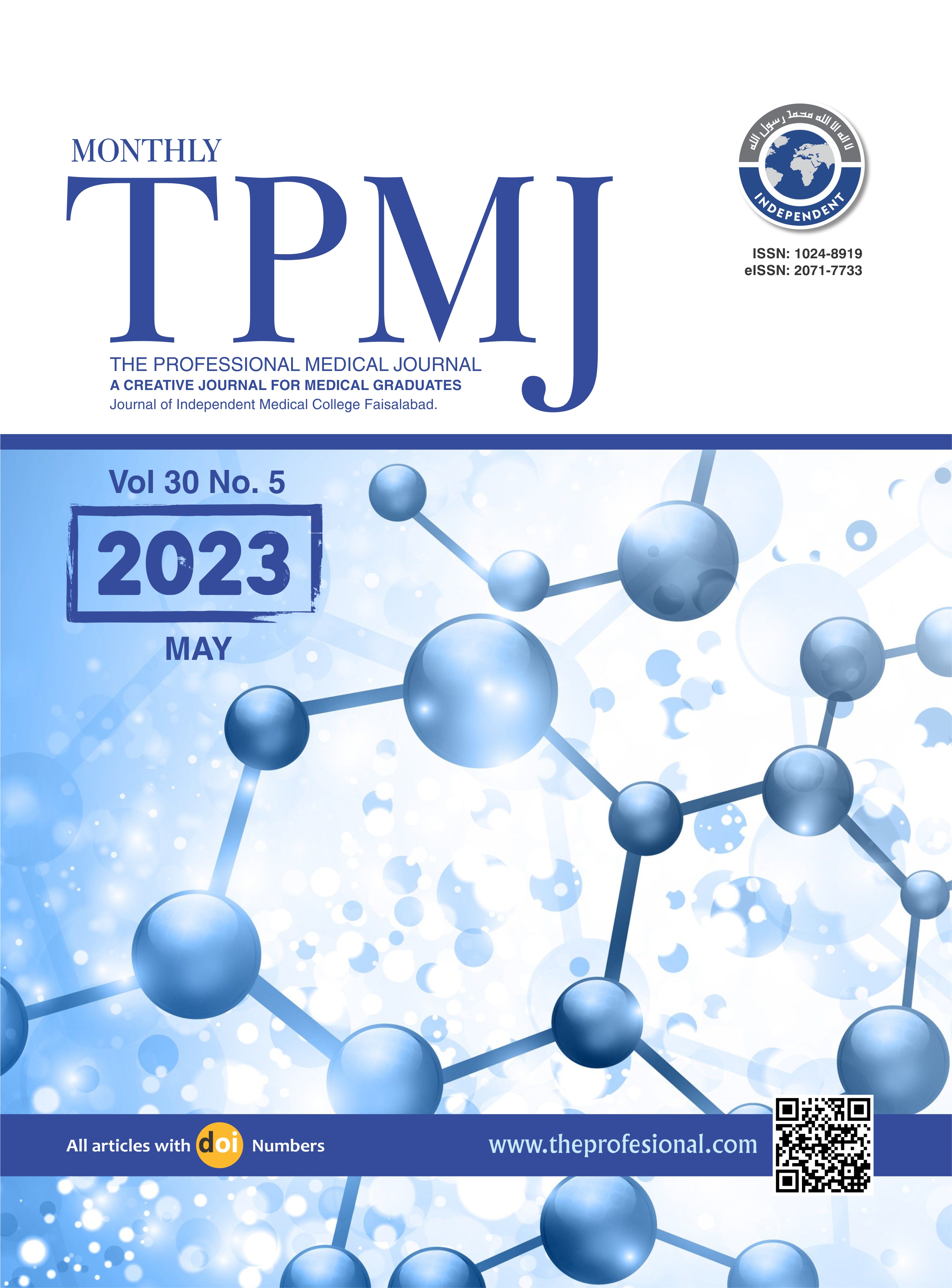Comparison of urethrocutaneous fistula after tubularized incised plate urethroplasty and urethral advancement and glanuloplasty incorporated in coronal hypospadias.
DOI:
https://doi.org/10.29309/TPMJ/2023.30.05.7466Keywords:
Hypospadias, TIPU, URAGPI, Urethrocutaneous FistulaAbstract
Objective: To find the incidence of urethrocutaneous fistula after Tubularized Incised Plate Urethroplasty (TIPU) and Urethral Advancement and Glanuloplasty Incorporated (URAGPI) repairs in children presenting with coronal hypospadias. Study Design: Randomized Prospective Study. Setting: Department of Paediatric Surgery, Pak Emirates Military Hospital, Rawalpindi. Period: 10th March 2022 to 10th November 2022. Material & Methods: A total of 40 children were enrolled in the study. Patients were randomly allocated to receive either TIPU (n=20) or URAGPI (n=20) technique after approval of hospital ethical review committee. Data was collected on a specifically designed proforma. Outcome was measured in terms of incidence of urethrocutaneous fistula in the two study groups. Results: Average age of patients was 28.2 ± 9.7 (months) in TIPU and 29.6 ± 9.9 months in URAGPI group. Frequency of fistula was 4 (20.0%) in TIPU repair compared to none 0 (0.0%) in the URAGPI repair. Difference in proportions of urethrocutaneous fistula was found statistically significant between the two groups (p-value = 0.03). Conclusion: Incidence of urethrocutaneous fistula was found greater in TIPU technique when compared with URAGPI technique.
Downloads
Published
Issue
Section
License
Copyright (c) 2023 The Professional Medical Journal

This work is licensed under a Creative Commons Attribution-NonCommercial 4.0 International License.


